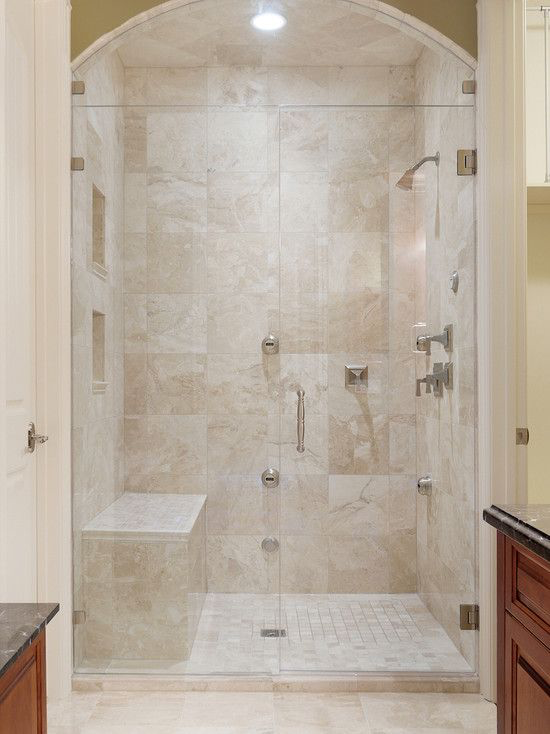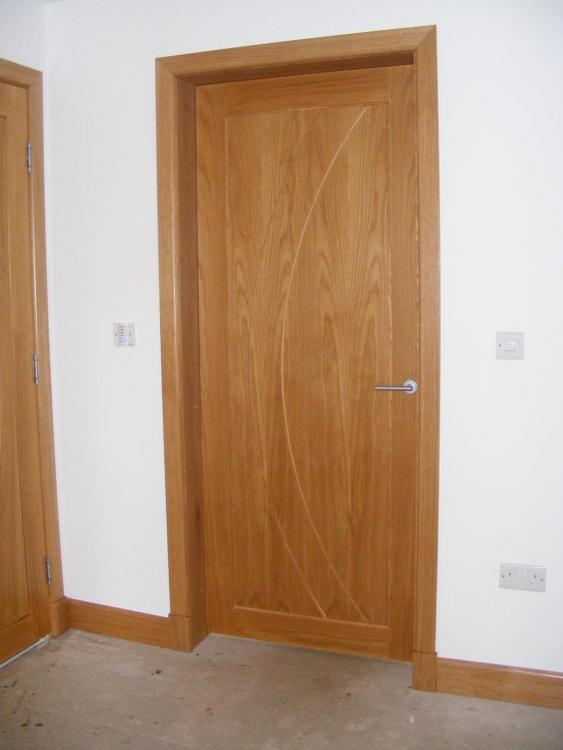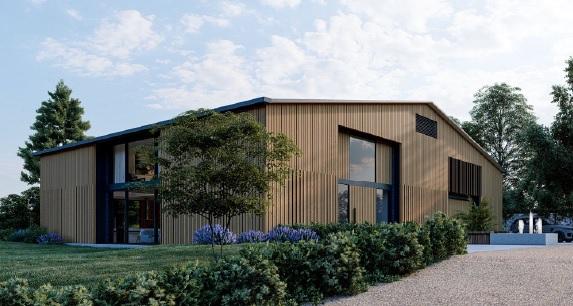Leaderboard
Popular Content
Showing content with the highest reputation on 10/06/20 in all areas
-
Got in touch with Triton who were really helpful and despite the fact it's 5 years old they agreed it shouldn't happen and are going to send me a new unit FOC.7 points
-
2 points
-
It's a sad fact of life that anything shipped with screw terminals particularly can loosen in transit/ storage. Consumer units as a good example. People throw them in but only check the security of the connections they have to make, trusting the prewired stuff to be be tight.2 points
-
2 points
-
That shower is knackered. Do not repair and reinstate it !!! Water will get into the top and when it does it'll have a nice 40amp supply with which to fry you......... Seriously? I'd send that pic to Triton UK sales, and on their Twitter feed too, and ask what they suggest you do with the failed unit, giving how dangerous this is, and what could have come from it. Do NOT think about salvaging this unit, please. It's Donald Ducked.2 points
-
Welcome. I while back I became a proud owner of a very old, stone built cottage in the middle of nowhere. I am gradually fixing it up. Roof doesn't leak any more, attic is insulated, all the internal walls are re-plastered in lime mortar, new ceilings are installed ........ plus a hundred other jobs, big and small. I'm definitely not a builder, but I am doing all the work myself. Having a place to ask for advice from people more experience in the topic is great.1 point
-
Even though it is a corner plot in which two elevations front a highway, the main/principal elevation would be that to the front as per... “in most cases the principal elevation will be that part of the house which fronts (directly or at an angle) the main highway serving the house (the main highway will be the one that sets the postcode for the house concerned). It will usually contain the main architectural features such as main bay windows or a porch serving the main entrance to the house. Usually, but not exclusively, the principal elevation will be what is understood to be the front of the house. There will only be one principal elevation on a house. Where there are two elevations which may have the character of a principal elevation, for example on a corner plot, a view will need to be taken as to which of these forms the principal elevation.”1 point
-
If tight for room, have the M&F go into your vertically rising bend, and use a second M&F to rectify ( instead of the equal M&F ). Rotating from 12 o'clock to 3 o'clock should take you from zero offset to a full pipe dia worth of offset.1 point
-
From the outlet of the boiler union, use a bit of pipe, then a 45o equal bend with an M&F 45o bend directly into that, and have them ascending ( twist them ) until it's minted lamb. Then head across to the bend and up and away.1 point
-
I have used engineered wood in our last three houses, originally wanted solid American black walnut but the company I was dealing with said no good with the ufh. One company I have dealt with online was ukflooringdirect, we had all our engineered stuff from them and they are great at sending out samples, we’ve had engineered oak in different widths and all good quality, we have only used laminate this time but bought it all from them too.1 point
-
1 point
-
If they applied that rule here, the Highlands would be deserted again. We have no footpath, no street lights, 3 miles to the nearest shop and no public transport. It's bloody brilliant. If push came to shove I could cycle to the shops (but it's uphill on the way back) I would prefer to walk, along the riverbank.1 point
-
You can just build a bench area into the shower as an option, or there are various seats that you can have in a shower. What I don't know is what works best for an older person - shower seat, walk in bath etc. I googled it and this seemed a useful guide to walk in baths versus showers versus wet rooms. It sounds like walk in baths are for people who want to have a bath and not a shower but have limited mobility. A wet room seems the best solution for covering all kinds of mobility issues. https://www.absolutemobility.co.uk/blog/walk-in-bath-shower-or-wet-room/1 point
-
I think it is PD but worth getting the LDC just in case. Someone I know got a LDC for a load of dormers to some houses. He did not realise that PD rights had been removed when the houses were first built but the LDC meant that the council could do nothing about it.1 point
-
Got ours from Woods of Wales. 21mm Oak pretreated with hardwax oil.1 point
-
1 point
-
You can pay for pre application meetings at most councils which should be reliable, but is also slow, and my local council are making them very low priority.. . Mine did free morning consultations with the duty officer (pre Covid) and you get their opinion, but beware, I got completely rubbish advice and wasted weeks with no recourse (I wanted to stay on friendly terms!).1 point
-
Last one I fitted we used concrete screws to hold it in place and then drilled 600 centres at 50mm staggered along the centre line starting 150mm from the end, then inserted the Fischer resin capsules and stainless pins. Waited til it went off then nipped them tight. It’s still there and has a lot of weight on it so it must work ..!!1 point
-
Can't help but just wanted to say that I love your username!1 point
-
Last one I did I could barely move on my own. After mortaring the floor I put two battens down at 1/3 and 2/3 of the width like | | . Then stood tray on edge on the battens and got it so it was leaning up against far wall. Lowered it down onto the battens. Then put a crowbar under a corner and raised it enough to pull a batten out. Repeated for other corner and battern. Worked a treat. The battens werent much thicker than the mortar.1 point
-
35c max flow and bond the wood to the concrete with something like Sika 5500s, and also for safety get a floor product that has grooves cut in the back to stop any cupping. Will be fine with that lot.1 point
-
Zone valves aren’t your problem - it’s the mixer valve. As the water warms in the pipes it needs less “hot” water from the ASHP so the blending valve starts to close. Without either a low loss header or a buffer, the blending valve will restrict the flow, potentially causing you flow issues on the ASHP.1 point
-
1 point
-
1 point
-
Buy an electric heated throw. An absolute game changer when it’s that time of year when you feel a bit cold when sitting around but it’s not really cold enough to heat the whole house.1 point
-
out of the cab like a pocket rocket, IC cover off. There it sits. Grinning. Look at me! Aren't I clever? A perfect fit almost. Reach in, try to lift it. Hernia warns against anything more strenuous. BuggerAndDoubleBugger. Reach down into the hole, three tonne strop and a couple of shackles round the boulder, hook up to the bucket. And lift. (By now the bells are ringing loudly even for me...) POP. ...it actually sounded like that. Out it all comes boulder, IC riser and all. And of course all the surrounding soil rushes in and fills the IC base and pipe. DAMN_BLOODY_NATION. They say nature abhors a vacuum.1 point
-
If the property is habitable, you'll need a residential mortgage. Then you'd get full planning for a replacement dwelling, then apply for a self build mortgage. The plot would then be valued as a building site, and unless the plot with FPP is worth the same as the residential mortgage you have, then you'll have a shortfall to meet with cash. We did exactly that, and luckily Ecology valued the plot with FPP the same as what we paid for it and was simply a matter of drawing down and paying off the residential mortgage. I think for any project, you'll need some sort of planning permission to get anything from a self build lender.1 point
-
3 days is how long you should wait if you are going by a civils/structural guide.1 point
-
Morning, you only need to wait to back fill the basement, you can get on with the ICF walls withing a few days of the pour.1 point
-
The next day. Our slab was poured on a Friday, ICF started on the Monday, and poured 2 weeks after slab. You don't need concrete to get to full 28 day strength unless you are putting a lot of force against it, eg. Backfilling or concrete slabs.1 point
-
Following with interest. I have a very good idea for adding led strips in steps pointing up the way in the vault in mine. I have attached the sketch I made in my onenote...when the idea occurred to me..late at night after drinking excessive amounts of wine. Thata a vaulted roof. One side showing the steps which would be hidden from view below but light up the roof further uo. Done with plaster in profile's. I'll make a proper drawing in autocad soon. Similar idea to temps middle pic above.1 point
-
Spotlights in a vaulted ceiling (or any ceiling) should not make the air test "difficult" You should be aiming for a sealed air tight layer, then a battened service void inside that before the plasterboard so your lights do not penetrate the air tight layer. You can get downlights that swivel, I fitted some nice square ones on a job recently (sory no pictures) or how about surface mount single spots that can swivel any direction?1 point
-
See also https://cl-pm.com/five-ways-to-think-of-lighting-a-barn-conversion/1 point
-
Got any beams crossing the vaulted ceiling? If you put spots on the sloping ceiling you will get a lot of glare (light going direct from spot to eye). Consider uplighters (or spots pointing up) on beams or high up on walls so they bounce light off the opposite slope. Alternatively look at hanging lamps or combination of both..1 point
-
I should start by saying hi. We've just had an offer accepted on a steel portal framed barn. It has full planning (not class Q) for conversion and I'm starting to investigate options for the build. We would like to project manage it ourselves and have done extensions and loft conversions before so have some experience but not on this scale or with the approach needed. The good thing about the barn is that it was once a grain store. The slab is 250mm or reinforced concrete and the web of the I beam must be 400mm. It was designed to be filled with grain and have some heavy plant on the floor for drying etc. I am trying to understand the best construction techniques (timber frame, block, SIP, ICF etc) and how to insulate without creating a thermal bridge. With the size of steels I may be able to attach the first floor to the stanchions. Planning specifies cladding in vertical larch boards so I need to figure out the best way of fixing that. I've read a few posts on here already but any advice would be gratefully received as would recommendations for builders ( in the South Leicestershire) Thanks Mark1 point
-
Let’s see what it looks like when you’ve got all that grout off first! How did you apply it, with a mop? ?0 points
-
Thanks. Can't actually believe we have done it. It's like a dream. I am going to wake up like Bobby in Dallas!0 points
-
You have not got this at all. He will be leaving them there so he has something to tie things down with.0 points
-
0 points
-
and then who would make us laugh/would we laugh at* on this forum (* delete as applicable)0 points
-
0 points
This leaderboard is set to London/GMT+01:00


















